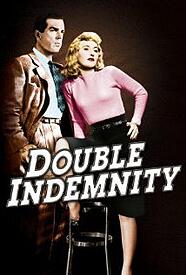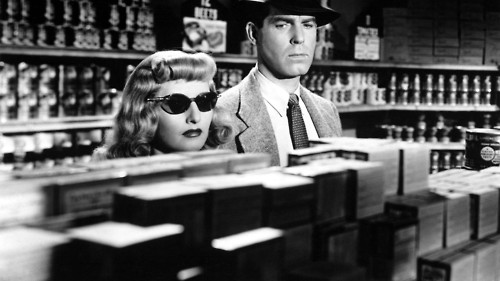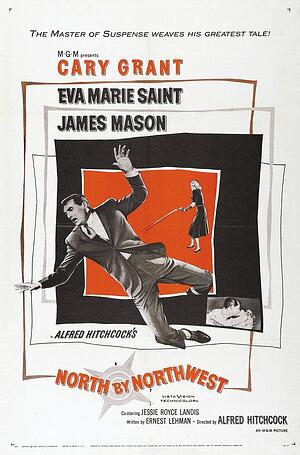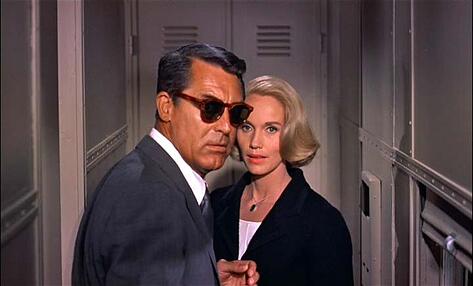LIM COLLEGE FACULTY BLOG
Straight Down the Line: Watching Students Watch Classic Films
posted by Robert Clark
 It has to be Double Indemnity, a movie with a screenplay co-written by Raymond Chandler about a nasty, greedy, adulterous pair that everyone should hate. Yet we root for them from start to end. The complicated plot twists add to the nail-biting suspense of what many say is arguably one of cinema’s greatest thrillers. Barbara Stanwyck plays her role of “Phyllis” with sexy, psychopathic aplomb. MacMurray’s “Walter” is a charming, hoodwinked sap, and we even get Edward G. Robinson as the insurance claims officer for comic relief. –Double Indemnity might sport a big name cast, but it tells a small time story—a timeless tale of lust, greed and evil played out in the dark, stuffy living rooms of ‘40s L.A.
It has to be Double Indemnity, a movie with a screenplay co-written by Raymond Chandler about a nasty, greedy, adulterous pair that everyone should hate. Yet we root for them from start to end. The complicated plot twists add to the nail-biting suspense of what many say is arguably one of cinema’s greatest thrillers. Barbara Stanwyck plays her role of “Phyllis” with sexy, psychopathic aplomb. MacMurray’s “Walter” is a charming, hoodwinked sap, and we even get Edward G. Robinson as the insurance claims officer for comic relief. –Double Indemnity might sport a big name cast, but it tells a small time story—a timeless tale of lust, greed and evil played out in the dark, stuffy living rooms of ‘40s L.A.
I had seen Double Indemnity twice before launching Cultural Connections to Fashion in 2009. This semester marks, I think, the fourteenth session of ‘CC’ that I have taught (I’ve had semesters where the class has run twice, plus summer school sessions, etc), which means I have seen Double Indemnity…..sixteen times! And yet, I never tire of watching it in class. The reason I never tire of watching Double Indemnity in class is because I don’t watch Double Indemnity in class; I watch the class!
Each semester, there are students who have never seen a black and white movie, and come to the viewing with the belief that—because the movie is almost seventy years old—it can’t be any good. Imagining that nobody had sex before 2010, the first thing that always strikes them is how sexually charged the movie is, the double-entendre repartee between Stanwyck and MacMurray (“There’s a speed limit in this city, you know”) their first indication that this film is not going to be (as they feared) boring and straight. That’s the point when I sense that they’re starting to get hooked.
Then there’s the genuinely troubling scene when MacMurray, hiding in the back seat of Stanwyck’s car as she drives her husband to the station (or so he thinks), strangles the poor man on Stanwyck’s signal. There are three beeps on the car’s horn, the camera zooms in on Stanwyck’s eyes—which hold an almost orgasmic intensity as she listens to her husband being murdered. Yet it is not Stanwyck’s eyes I am looking at in this scene; it is the eyes of the class, large as dinner-plates, their hands over their mouths as they gasp at the horror of it. I remember one semester a girl exclaiming; ‘Man! They really did it!’
They really did indeed. The reaction when the horrible heroes have dumped the body and their getaway car won’t start is a favorite; the inhalation of breath and hands over the eyes as the kids peek through their fingers during this nail-biting moment is – of course – the moment I stop the movie and ask the class “What’s wrong?”
“They’re going to get caught!” they reply with alarm. I then ask them why they want this diabolical pair of murderers to get away with it? This opens the class up to an interesting discussion on the moral climate of the postwar era (for although Double Indemnity was filmed in the final year of WWII, it is its resonance with the postwar psyche that makes it so historically significant) and why Film Noir has us rooting for people we would otherwise condemn.
Yet interesting though our conversation is, the students are keen to get back to the story, each squirming in their seats at every suspenseful turn, the final scene causing either whoops of delight or cries of outrage (depending on if a student is Team Phyllis or Team Walter).

My favorite part of the in-class Double Indemnity experience is to throw open the movie’s final, key question: “Do you think she loved him at the end?” The class then enters a heated debate (“No! Of course she didn’t love him! It was just another of her schemes!”, or “Yes! That’s why she couldn’t fire that second shot! She’d met her match in Walter and that’s why she fell in love with him!”) And of course, they always ask me what I think, to which I always give them the truthful answer; “I change my mind each semester.”
I really do change my mind with each semester, and the question still intrigues me. With each and every viewing, I find myself as caught up in Billy Wilder’s artful direction, Stanwyck’s incendiary performance, Edith Head’s sexy costumes (we all want that long lounge dress with the black and white top and bias cut back) and Miklós Rózsa’s luscious score (its bombastic drama beautifully offsets the tawdry and pathetically ordinary nature of the crime) as much as the very first time I watched it.
 A few weeks after seeing Double Indemnity, the class sees the second of the two movies I show them in Cultural Connections, and what better optic through which to view the Atomic Age than Alfred Hitchcock’s ’59 thriller, North by Northwest. As fashion is still enamored with The Hitchcock Blonde, I feel it is important for the students to see at least one Hitchcock film, and as the world in general is currently in love with Mid-Century Modern sensibilities, North by Northwest is the ideal vessel for topics we have covered in class; International Modern architecture, The Cold War, Eames, the ‘50s obsession with travel, cocktail culture, Primitivism (you might remember where ‘The McGuffin’ is housed), etc.
A few weeks after seeing Double Indemnity, the class sees the second of the two movies I show them in Cultural Connections, and what better optic through which to view the Atomic Age than Alfred Hitchcock’s ’59 thriller, North by Northwest. As fashion is still enamored with The Hitchcock Blonde, I feel it is important for the students to see at least one Hitchcock film, and as the world in general is currently in love with Mid-Century Modern sensibilities, North by Northwest is the ideal vessel for topics we have covered in class; International Modern architecture, The Cold War, Eames, the ‘50s obsession with travel, cocktail culture, Primitivism (you might remember where ‘The McGuffin’ is housed), etc.
If the students love Double Indemnity, they go positively nuts over North by Northwest. Many of the students have never seen Cary Grant before, and I remember one memorable viewing when one of my students said; “Oh. My. God. I don’t think I ever even knew what a MAN was until today!” Then of course, there is Eva Marie Saint, cool as a cucumber and oozing subtle sex appeal as the elusive “Miss Kendal.” Again, the girls in my class are enamored by her class, each vows that they will no longer use today’s ditzy blondes as their sartorial role models, but instead, channel the subtle style and calm confidence of The Hitchcock Blonde.
 Last semester, as the end credits of North by Northwest rolled by, student Jeanette Fabre let out a line that I’ll never forget;
Last semester, as the end credits of North by Northwest rolled by, student Jeanette Fabre let out a line that I’ll never forget;
“What’s all this JUNK I’ve been watching all these years?”
Indeed, unless young people are exposed to truly great Classic Movies, how are they to know that today’s endless Rom-Coms and ‘action dramas’ are (if truth be told) sort of ‘junk’ compared to the oeuvre of Billy Wilder, Alfred Hitchcock, Frank Capra, William Wyler et al.
I always give my students my Netflix and Amazon Instant account details in the hopes that they’ll log in and watch movies other than the latest Jen Aniston romp or slasher movie. At first, the Netflix account remains untouched (other than a few cheeky souls who log in to watch Gossip Girl). Yet after Double Indemnity and North by Northwest, my “recently viewed” lists contain such titles as The Postman Always Rings Twice, All About Eve, The Letter, Nosferatu, Notorious and Casablanca, movies that everyone should know, yet that the youth of today aren’t otherwise encouraged to watch.
And this to me seems like nothing short of tragedy, for not only are Classic Movies a genuine art form, there’s a reason why they’re ‘classic’; it’s ‘cause they’re so much fun!
I recently received an email from a student who had taken Cultural Connections a few years ago and has since graduated. The email contained but three lines, but those three lines were very, very gratifying;
“’Just saw Now, Voyager. Inconsolable! (I hate you!)”
*
Amanda Hallay is a full-time faculty member at LIM College, where she teaches Who Wore What When: A History of Culture and Costume, Cultural Connections to Fashion, POP CENTURY: A History of Popular Music in the Postwar Era, Fashion Forecasting, and Fashion Writing. She is the author of several titles on 20th century popular culture, and is sure she can confidently recite every single line from ‘Now, Voyager’ without making a mistake.